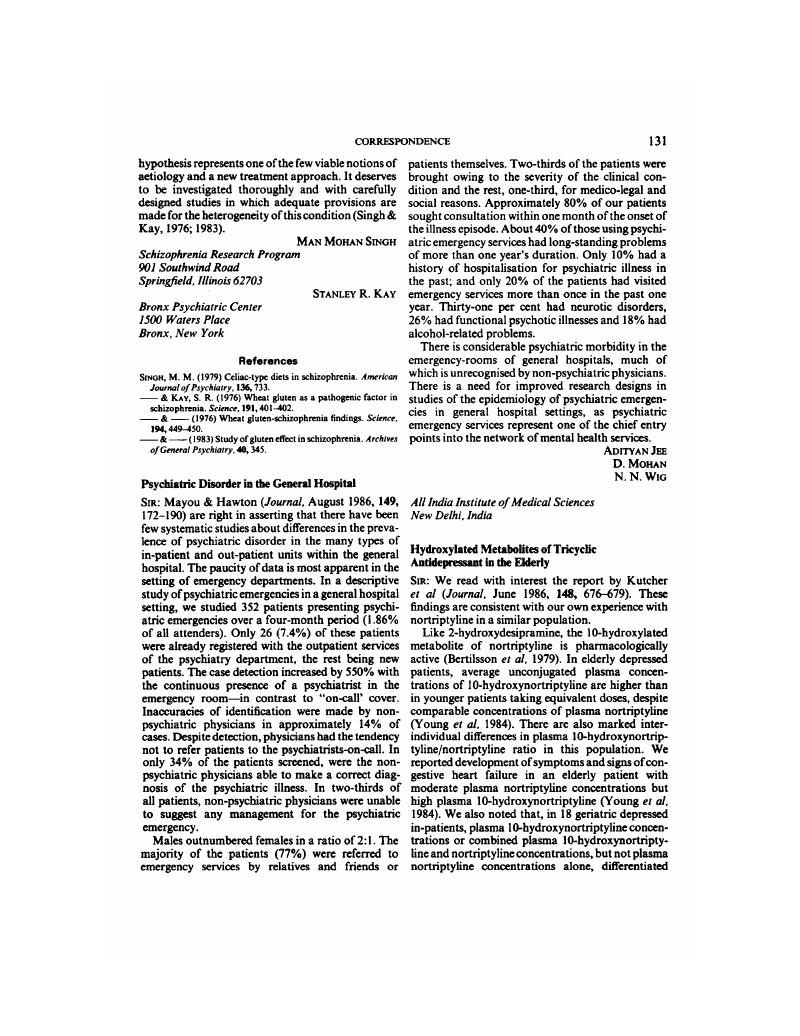No CrossRef data available.
Article contents
Hydroxylated Metabolites of Tricyclic Antidepressant in the Elderly
Published online by Cambridge University Press: 02 January 2018
Abstract
An abstract is not available for this content so a preview has been provided. As you have access to this content, a full PDF is available via the ‘Save PDF’ action button.

- Type
- Correspondence
- Information
- Copyright
- Copyright © 1987 The Royal College of Psychiatrists
References
Bertilsson, L., Mellctrom, B. & Sjoqvist, F. (1979) Pronounced inhibition of noradrenaline uptake by 10-hydroxymetabolites of nortriptyline. Life Sciences, 25,1285–1292.Google Scholar
Young, R. C., Alexopoulos, G. S., Shamoian, C. A. & Kutt, H. (1984) Heart failure associated with high plasma 10-hydroxynor-triptylinc levels. American Journal of Psychiatry, 141,432–433.Google ScholarPubMed
Young, R. C., Alexopoulos, G. S., Shamoian, C. A. & Kutt, H. (1984) Plasma 10-hydroxynortriptyline in elderly depressed patients. Clinical Pharmacology and Therapeutics, 35, 540–544.CrossRefGoogle ScholarPubMed
Young, R. C., Alexopoulos, G. S., Shamoian, C. A. & Kutt, H. (1985) Plasma 10-hydroxynortriptyline and ECG changes in elderly depressed patients. American Journal of Psychiatry, 142, 866–868.Google Scholar



eLetters
No eLetters have been published for this article.